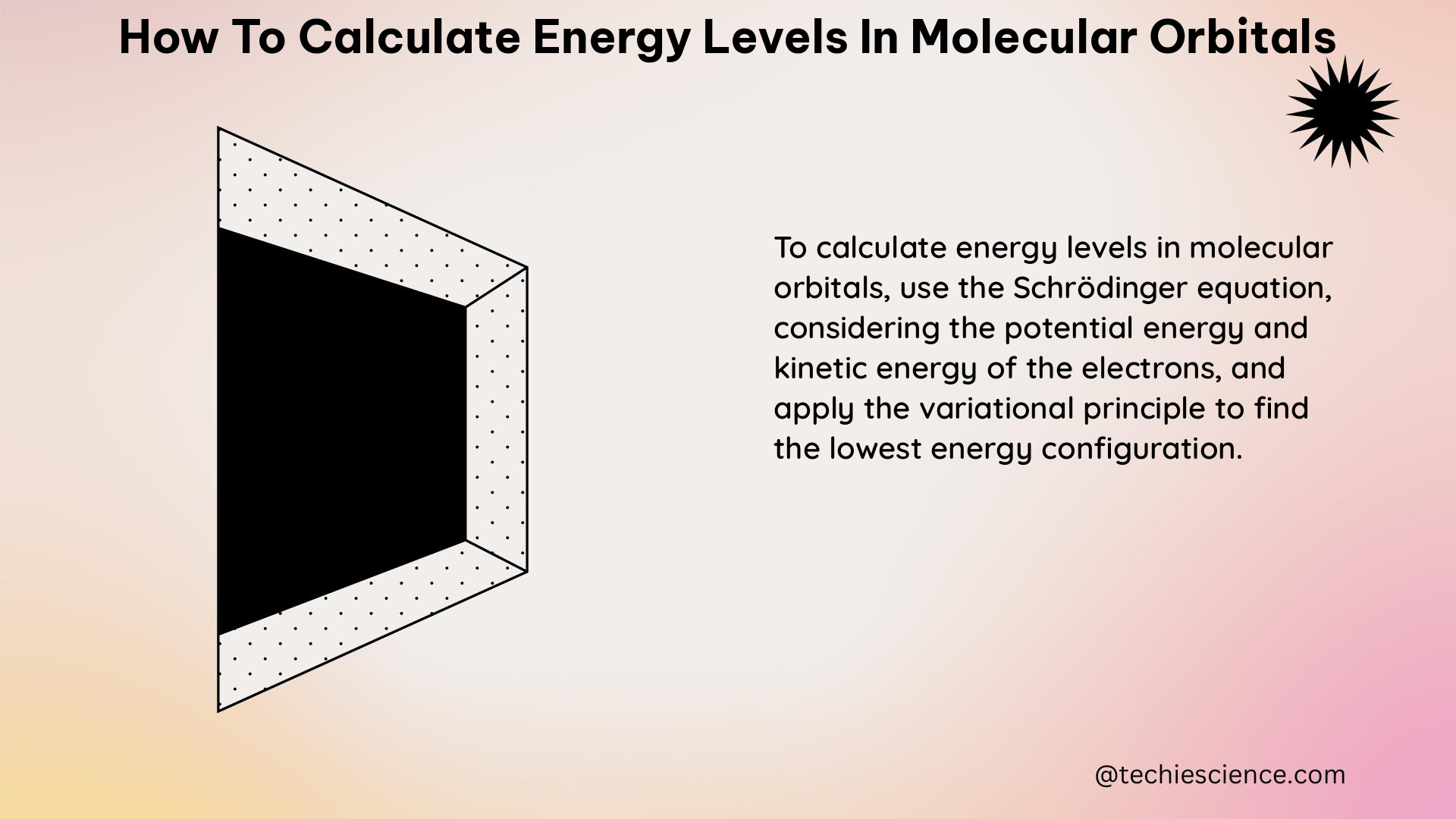Calculating the energy levels in molecular orbitals is a fundamental concept in quantum chemistry and physical chemistry. This process involves several key steps and considerations, including the combination of atomic orbitals, the construction of energy-level diagrams, and the calculation of bond order. In this comprehensive guide, we will delve into the details of these steps, providing you with the necessary tools and knowledge to master the calculation of energy levels in molecular orbitals.
Atomic Orbital Combination
The first step in calculating energy levels in molecular orbitals is to understand the combination of atomic orbitals. When atoms come together to form a molecule, their individual atomic orbitals interact and combine to create molecular orbitals. The number of molecular orbitals formed is equal to the number of atomic orbitals used in the combination.
The overlap between the atomic orbitals plays a crucial role in determining the energy difference between the bonding and antibonding molecular orbitals. Greater overlap leads to a larger energy difference, while smaller overlap results in a smaller energy difference.
The combination of atomic orbitals can be described using the Linear Combination of Atomic Orbitals (LCAO) method, which provides a qualitative understanding of chemical bonding. This method involves the linear combination of atomic wavefunctions to form molecular wavefunctions, which can then be used to calculate the energy levels of the molecular orbitals.
Energy-Level Diagram

Once the molecular orbitals have been formed, the next step is to construct an energy-level diagram. This diagram arranges the molecular orbitals in order of increasing energy, allowing you to visualize the relative energies of the bonding and antibonding orbitals.
To fill the molecular orbitals, you must follow the Pauli exclusion principle and Hund’s rule. The Pauli exclusion principle states that no two electrons in a molecule can have the same set of quantum numbers, while Hund’s rule dictates that the electrons will occupy the available orbitals in a way that maximizes the total spin multiplicity.
By filling the molecular orbitals according to these principles, you can determine the electronic configuration of the molecule and calculate its bond order.
Bond Order Calculation
The bond order is a measure of the strength of the chemical bond in a molecule. It is calculated by subtracting the number of antibonding electrons from the number of bonding electrons and dividing the result by 2.
The bond order can provide valuable information about the stability and reactivity of a molecule. A higher bond order indicates a stronger, more stable bond, while a lower bond order suggests a weaker, more reactive bond.
Quantifiable Data
To illustrate the concepts discussed above, let’s consider some quantifiable data for various diatomic molecules:
| Molecule | Bond Length (pm) | Bond Energy (kJ/mol) |
|---|---|---|
| H₂⁺ | 106 | 269 |
| H₂ | 74 | 436 |
| N₂ | 109.8 | 945.3 |
| F₂ | 141.2 | 158.8 |
Additionally, for homonuclear diatomic molecules like N₂, O₂, and F₂, the energy difference between the σ and σ molecular orbitals is significantly greater than the difference between the π and π molecular orbitals.
Experimental Methods
Experimental techniques, such as photoelectron spectroscopy, can be used to measure the spatial probability density of electrons in molecules, allowing for the determination of molecular orbitals. This information can be used to validate the theoretical calculations and provide a deeper understanding of the electronic structure of molecules.
Theoretical Explanation
The theoretical explanation for the calculation of energy levels in molecular orbitals involves the use of quantum mechanics and group theory. The LCAO method, as mentioned earlier, provides a qualitative understanding of chemical bonding, while group theory and symmetry concepts are used to describe the bonding in simple molecules and determine the precise energies of the molecular orbitals.
Conclusion
Calculating the energy levels in molecular orbitals is a crucial step in understanding the electronic structure and chemical properties of molecules. By following the key steps outlined in this guide, including the combination of atomic orbitals, the construction of energy-level diagrams, and the calculation of bond order, you can develop a comprehensive understanding of this fundamental concept in physical chemistry.
Remember to refer to the quantifiable data and theoretical explanations provided to reinforce your understanding and apply these principles to various molecular systems. With practice and a solid grasp of the underlying principles, you will be well-equipped to tackle the calculation of energy levels in molecular orbitals with confidence.
References
- Chemistry 301 – Molecular Orbitals
- Molecular Orbitals – Pearson
- Molecular Orbital Theory – Chemistry LibreTexts
- Complete Determination of Molecular Orbitals by Measurement of Phase Symmetry and Electron Density
- Molecular Orbitals Can Be Ordered According to Their Energies – LibreTexts

The lambdageeks.com Core SME Team is a group of experienced subject matter experts from diverse scientific and technical fields including Physics, Chemistry, Technology,Electronics & Electrical Engineering, Automotive, Mechanical Engineering. Our team collaborates to create high-quality, well-researched articles on a wide range of science and technology topics for the lambdageeks.com website.
All Our Senior SME are having more than 7 Years of experience in the respective fields . They are either Working Industry Professionals or assocaited With different Universities. Refer Our Authors Page to get to know About our Core SMEs.